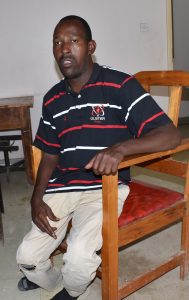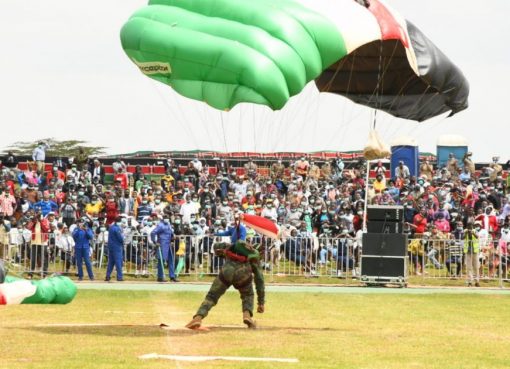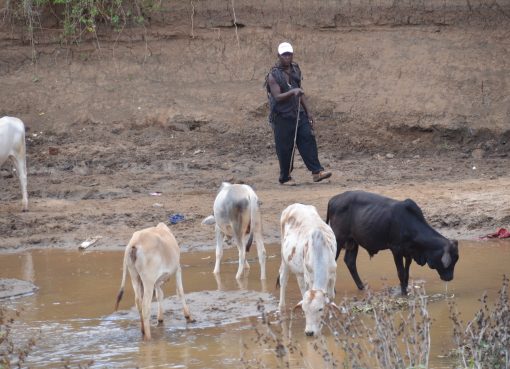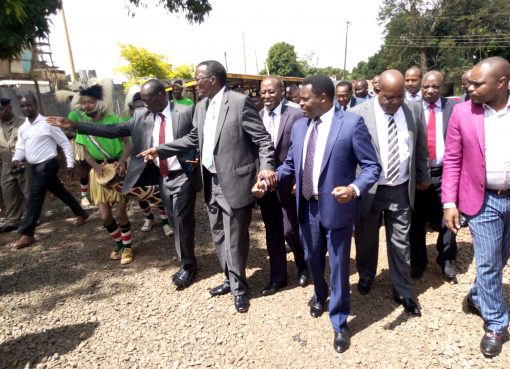
Photo by KNA.
According to the research conducted by the Kenya Demographic and Health Survey and the World Bank, 10 percent of the population in Kenya representing 4.44 million people are disabled in one way or the other.
And 26.2 percent of these disabled people suffer from mobility, 19.1 percent are visually impaired, 12.4 percent have auditory problems, 10.6 percent speech impairment, and 8.2 percent suffer cognitive impairment. Some 23.6 percent suffer from other forms of disabilities such as albinism.
Only 33.3 percent of the disabled are employed representing 1.48 million people. The other 66.7 percent representing 2.97 million people are unemployed and live in poverty.
These people are either born with disability or end up having a form of disability as a result of an infirmity or being involved in an accident.
Thirty-eight -year old, James Kihara was born without any form of disability until one bad evening on September 2nd, 2018 when he lost his left hand to an act of violence in Narok County.
Kihara says on the fateful day, he was going home after a tedious job as a matatu driver when he found himself in the middle of a chaotic demonstration that he wasn’t a part of. In the process of running away he was ambushed by a group of men who were demonstrating against the demolition of Uhuru market in Narok town by the County Government.
“I saw people demonstrating so I started running but I fell down. Before I could stand back up and leave, I was ambushed by machete- wielding youths who seriously injured me and severed my left hand. I was rushed to the hospital but the doctors were forced to cut off the arm as it had been severed badly,” he says.
At this point, Kihara’s life took a drastic turn. With just one hand, he could no longer drive vehicles like he used to do, leaving him helpless with no means of income to support his family consisting a wife and two children.
“The tragedy came with a big hospital bill but thankfully and mercifully, fellow drivers who I used to work with came together and contributed to help foot the bill. The doctor said I could be fitted with an artificial hand costing Sh. 350,000 which I couldn’t raise,” he adds.
With this set back in life, Kihara had to find something new to do in order to support his family and save up for the artificial hand. But with the various challenges this new situation in life had thrown his way, life was proving to be difficult. He says he had to move his family to a new home where he could pay less in an attempt to reduce expenses while he was still healing.
Kihara also says it has been challenging having only one hand. “I stayed at home for a while jobless since it was hard finding a job where I could only use one hand. I wanted to go back to my former job as a driver but one cannot be able to drive long distance easily with just one hand. Due to this I had to find another form of work I could do to cater for my needs and those of my family,”
Kihara ended up working at a car wash where he now makes approximately Sh. 300 per day which compared to more than Sh. 1,000 he made as a driver is inadequate to meet his financial needs as a family man. Fortunately, due to his connection with former drivers, he gets car washing jobs now and then which boosts his income.
Amos Ndeiya who employed Kihara at the car wash says it was hard for him adjusting to the new life and as a group of employees at the car wash, they had to come together and offer him moral and psychological support.
“He seemed to be having a hard time at work when he started and he was withdrawn. I had personally known him earlier and he was a jovial person. After this accident however one could notice the change in behavior,” he said.
Stigma and discrimination continue to be barriers for the equal participation of persons with disabilities in society. In many communities, disabled family members are often hidden away due to societal stigma and prejudices. Kihara has had to face several incidences of discrimination after losing his hand.
“Sometimes you find that a person comes and finds him here and after seeing he has only one hand, they don’t want to give him the job to wash their vehicles,” adds Ndeiya.
“There is always a peaceful method of resolving a problem. Even if a demonstration is the only remaining option, please do it peacefully and don’t harm innocent people since you could ruin or end their lives,” Ndeiya says
To date, Kihara has not been able to save up enough money to get the artificial arm and is still looking for well-wishers who can help him out. He still harbors dreams of going back to his former job of driving matatus.
Kenya acknowledges disability as a phenomenon that cuts across all spheres of society and which requires support from all sectors. Despite the absence of accurate data, the Government and other stakeholders have continued to offer a wide range of services to Persons with Disabilities. However, these services have reached only a small percentage of the disabled and more needs to be done to help them.
People with different forms of disabilities must be empowered with different survival skills that would enable them participate in gainful employment and nation building. Otherwise persons with disabilities will be a drain on family and national resources. The disabled who are not empowered economically are unable to contribute to family income and welfare and may strain limited resources as their families attempt to provide special care for them.
A majority of disabled people live in extreme poverty and thus the need to develop more strategies to empower them. One of the strategies should be equipping them with adaptability skills to reduce over-dependence and make them self-reliant and able to participate in national development.
By Mabel Keya–Shikuku/Joseph Kariuki

Photo by KNA.




